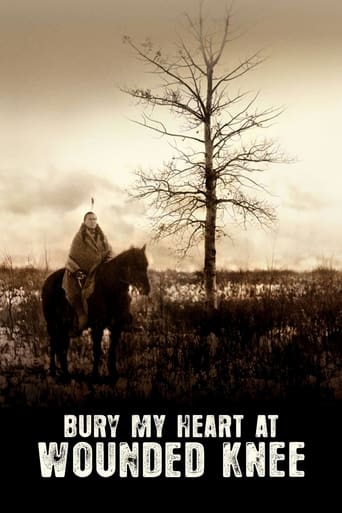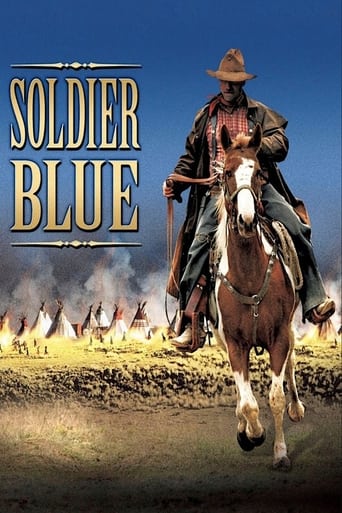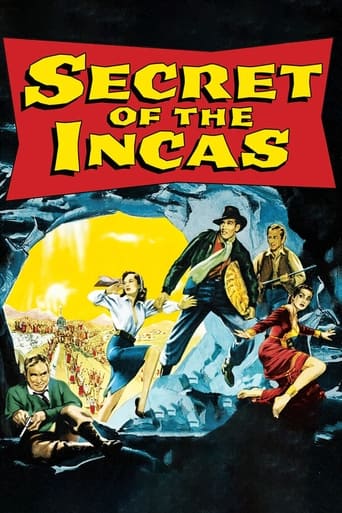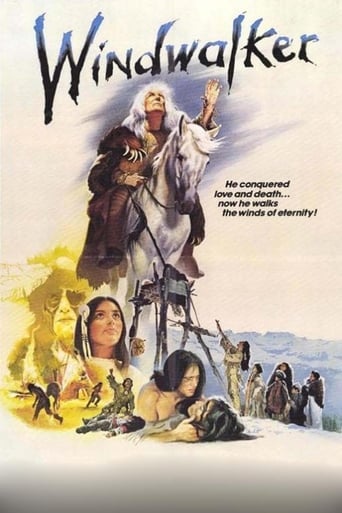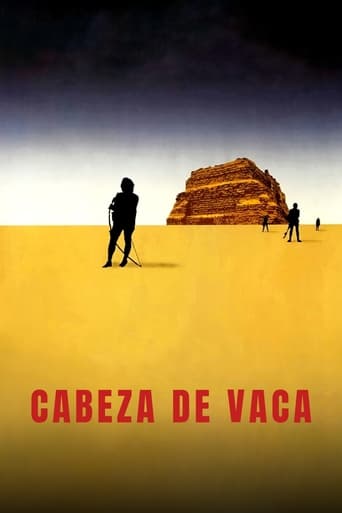

Cabeza de Vaca (1991)
An international award winning saga of old Mexico. In 1528, a Spanish expedition flounders off the coast of Florida with 600 lives lost. One survivor, Alvar Nunez Cabeza de Vaca, roams across the American continent searching for his Spanish comrades. Instead, he discovers the Iguase, an ancient Indian tribe. Over the next eight years, Cabeza de Vaca learns their mystical and mysterious culture, becoming a healer and a leader. But soon this New World collides with the Old World as Spanish conquistadors seek to enslave the Indians, and Cabeza de Vaca must confront his own people and his past.
Watch Trailer
Cast


Similar titles
Reviews
Director/co-writer Nicolás Echevarría profoundly missed an opportunity to make this otherwise flawed film memorable by failing to let the sub-titles (in English for this viewer) mirror de Vaca's gradual understanding of the language he learned as an 8 year captive. The indigenous people were shown to be of a different-than-Western civilization; extremely different in cultural day to day living. But he learned how to speak and hear them, understand them. By sharing his gradual ability to think like them, with us the audience, we too could have seen their being 'foreign' gradually change into kinship . This would make the ending of the movie, as the Spanish conquistadors force the people into slavery, misery and premature death, much more effecting. As it is it's solely de Vaca's humanity that cries from the screen instead of the humanity of the people we should have learned to know as individuals, as well as his.
Very interesting and visually stunning movie, which paints a unique portrait of pre-European life in this region.However, most of the story is fabrication, as other reviewers have pointed out, which is a shame and takes much away from the 'insight' that this film seems to give.On the point of geography- This film joins the expedition part way through their journey after they have left the Florida peninsula and just before they land in the Galveston region. It is worth pointing out that at this time THE WHOLE OF THE REGION FROM THE Florida PENINSULA TO NORTHERN 'NEW SPAIN' (MEXICO) WAS REGARDED AS Florida, and so film characters talking about the land as Florida is historically accurate.Very good film though and definitely worth a watch.
In a strange and fantastic film, the Spanish explorer Cabeza de Vaca interacts with American Indians before any other Europeans and becomes integrated into their world before he his torn out of it by the arrival of more Spanish.To answer a common question . . . Why does Florida look like Arizona in this film? Because it's not Florida. It's not even supposed to be Florida.The makers of this film (and the makers of this film's packaging) have their facts wrong but their scenery right. Cabeza de Vaca landed in Texas, probably at the site of today's Galveston. That explains the slow-moving, brown water streams and the thick vegetation and mosquitoes. He then walked west or southwest. West Texas and northern Mexico do have semi-desert conditions and modest sized mountains and mesas and some canyons. The real Cabeza de Vaca left Florida on a flimsy raft -- depicted in the film -- hoping to make it to Cuba. Instead, he landed on the Texas gulf coast. I don't know why the filmmakers labeled the landscape as Florida.This film is odd. It is exceptionally slow paced. There is little intelligible dialogue: lots of grunts or dialogue in indigenous languages (but no subtitles). We are as lost as Cabeza de Vaca. This film is from his point of view, and no explanation for his healing powers is offered. Nor do we receive an explanation of the tribal dynamics (some accept him, some enslave him, another seems to wish to execute him).
One chapter of the conquista - the subjugation of the Native American peoples by Europeans. We follow Alvaro Nunez Cabeza de Vaca's adventures and misadventures in the New World from a crash landing of his ship through his saving and capture by the Indians, his forced immersion into the Indian culture, his almost mystical pilgrimage from Florida through the American Southwest to California (or was it Mexico?), up to the bitter end at the hands of his European compatriots. Spectacular visuals lend the film the power of myth, but this is still more realistic depiction of the tragic clash of the cultures in the 16th century America than all the Hollywood productions, including Roland Joffe's "The Mission (1986)" (which, by the way, I do like). The only feature film with this topic that I consider equal, or perhaps even superior, is "Jerico (1988)" made by a Venezuelan ethnography professor Luis Alberto Lamata.







